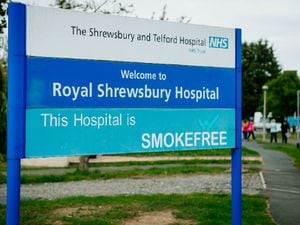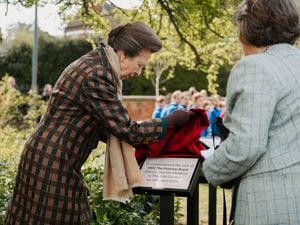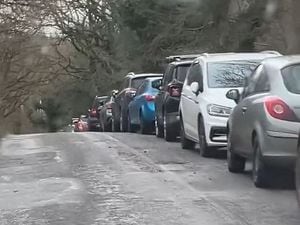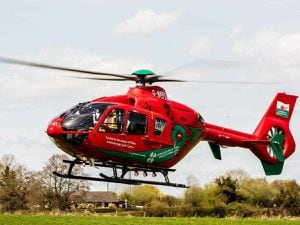Flashback to February 2007
2007
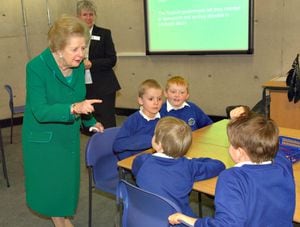
The Cold War, a tense era thankfully behind us and now the stuff of museums.
At least that seemed to be the case when the National Cold War Exhibition at the RAF Museum at Cosford was officially opened by Princess Anne on Wednesday, February 7, 2007. Today however we are once more feeling the chill of a new Cold War as East-West relations are back in the deep freeze and Putin's troops have massed at the gates of the Ukraine.
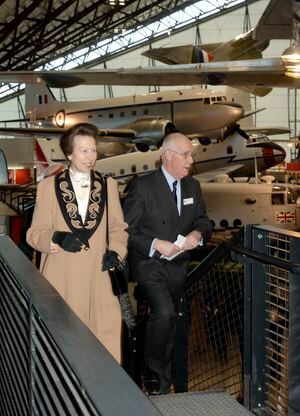
As the Princess Royal arrived on that day 15 years ago she was greeted by Baroness Thatcher – that is, Margaret Thatcher, who was dubbed "The Iron Lady" by the Russians in the Soviet era, in what was not meant as a compliment.
As relations thawed however Mrs Thatcher struck up a good relationship with Mikhail Gorbachev, the Russian leader – somebody she famously said she could "do business with."
Indeed, it had been hoped that Gorbachev, and former American defence secretary Robert McNamara, would have been able to join Baroness Thatcher for the opening, which would have been a highly symbolic moment. Sadly neither the Russian nor the American were fit enough to travel.
Baroness Thatcher was herself frail and slow, but defiantly without the walking stick which she had come to use.
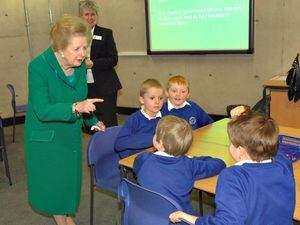
She and the Princess Royal, who was accompanied by her husband Commander Timothy Lawrence, spent some time viewing the huge exhibition which included Britain's three V-bombers, the Vulcan, Victor, and Valiant, on display for the first time together.
The National Cold War Exhibition was a £12.5 million new venture for the museum, the world's first exhibition dedicated solely to documenting the Cold War.
Just before the princess arrived two pieces of flying history streaked across the skies in a flypast over the base, in the form of a Gloster Meteor and De Havilland Vampire. The Meteor was the first jet fighter to enter service with the RAF, seeing action in the closing period of the Second World War, while the Vampire came just after the war.
The exhibition tells the story of the Cold War from national, international, social, political and cultural perspectives, with displays ranging from postcards sent across the Berlin borders and a section of the Berlin wall, to giant aircraft suspended from the roof, and life-size Russian dolls.
And as it was so long ago perhaps we'd better explain that the Cold War was not a "hot" war with actual fighting, but a prolonged period of tension and mutual hostility between the then Soviet Union and the West, with nuclear missiles aimed at each other.
The collapse of the Soviet Union seemed to have heralded a new era in East-West relations based on trust, friendship and co-operation. There was talk of a peace dividend in which standing armed forces could be scaled down, saving money apart from anything else.
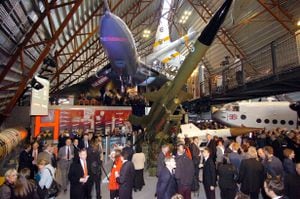
Much of the credit for the expansion of the RAF Museum at Cosford was down to John Francis, who was awarded the OBE for his work in the Queen's Birthday Honours the previous June, and then retired in the September as the museum's general manager.
"I have seen the site grow from virtual dereliction to what it is today," he said as his dream came to reality.
"It was a very proud moment for me to see all of this and for me to introduce Princess Anne to all of my old staff.
"She wanted to know where the idea came from and I told her that I had had a vision for what this site should look like when I retired. She told me it was all wonderful and she wished she had more time."
Apart from its contents, the building itself with its distinctive metal roof which catches the sunlight is a dramatic statement.
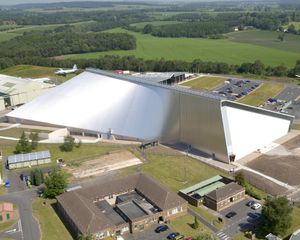
The design was the product of the Feilden Clegg Bradley Studios, which describes the concept thus: "Two curvilinear triangular volumes meet along a central divide to give physical expression to the titanic struggle of the irreconcilable forces battling in the Cold War. The volumes are forced 30 metres up out of the ground to create a 130m long ‘fault line’ along their adjoining edges with the metaphor continued in the twisted plan geometry of the roof."
It has won a number of awards, including a Civic Trust Award in 2008, and a Royal Institute of British Architects Award in 2007.

